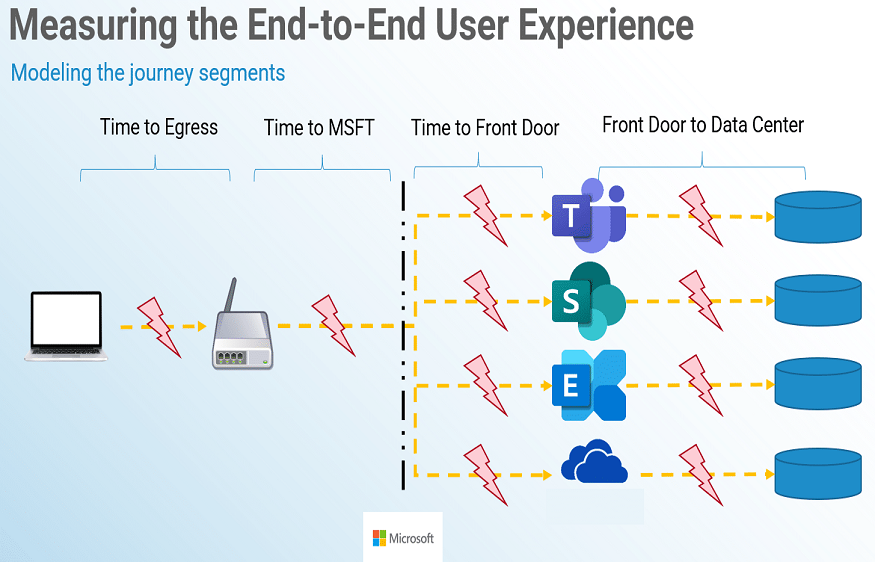Microsoft Teams migration is a significant undertaking for any business, and it often involves the transition from a collaboration platform to Microsoft Teams. Organisations must measure and evaluate the outcomes of the migration process to ensure a successful migration. This article aims to provide a comprehensive guide on how businesses can effectively measure and evaluate Teams migration outcomes. By adopting a systematic approach to assessment, organisations can identify areas of improvement, track progress, and maximise the benefits of migrating to Teams.
Let’s see how to measure and evaluate Teams migration outcomes. It can be done in the following manner:
Define Clear Objectives
Before measuring and evaluating Teams migration outcomes, you must establish clear objectives. Determine the key performance indicators (KPIs) that align with the migration goals. Common objectives could include increased team collaboration, improved communication efficiency, enhanced productivity, and cost savings. Setting clear objectives allows businesses to measure the success of the migration based on specific criteria and track progress effectively.
Key takeaway: Clearly define the desired outcomes and objectives for the Teams migration process, such as increased collaboration, improved communication, and cost savings.
Gather Baseline Data
It is crucial to collect baseline data before the migration begins if you wish to evaluate the effectiveness of the Teams migration. Baseline data provides a benchmark against which you can compare the post-migration outcomes. Metrics such as communication volume, response times, and collaboration patterns can be measured using existing collaboration tools or surveys. This data will serve as a reference point for assessing the impact of the migration on team performance.
Key takeaway: Select specific factors that align with the defined success criteria, such as user adoption rates, communication volume, response times, and collaboration patterns.
Monitor Key Metrics
Monitoring key metrics to evaluate the outcomes during and after the migration is essential. Key metrics include user adoption rates, usage patterns, user satisfaction surveys, and employee feedback. These metrics provide insights into how well the workforce embraces and utilises the Teams migration. Businesses must regularly monitor these metrics to identify areas requiring attention or improvement.
Key takeaway: Gather and analyse baseline data before the migration to establish a benchmark for measuring the impact of key metrics of migration on team performance
Conduct User Surveys and Feedback Sessions
An effective way to evaluate Teams migration outcomes is by conducting user surveys and feedback sessions. Surveys can be administered before, during, and after the migration to capture user experiences, challenges faced, and suggestions for improvement. Feedback sessions, either in person or virtual, allow employees to share their thoughts and concerns directly. This qualitative feedback complements quantitative data, offering a holistic understanding of the migration’s impact.
Key takeaway: Collect user surveys and conduct feedback sessions to gather qualitative insights and employee feedback, enabling organisations to learn from their experiences and make informed decisions for future improvements.
Compare Against Objectives
Once sufficient data is collected, compare the outcomes of the Teams migration against the predefined objectives. Analyse the data and identify areas where the migration has met or exceeded expectations. Conversely, pinpoint areas where the goals still need to be fully achieved. This analysis will help organisations understand the overall success of the migration and make informed decisions on further optimisation.
Key takeaway: Compare the post-migration results against the established success criteria to evaluate the overall success of the migration and identify areas of achievement or improvement.
Continuously Optimise and Improve
Teams migration evaluation process should continue after the initial assessment. Use the insights gained from measuring and evaluating the Teams migration outcomes to identify opportunities for improvement. Implement necessary adjustments to address any shortcomings or challenges highlighted in the evaluation. Continuously optimise the use of Microsoft Teams by providing additional training, updating policies, or introducing new features that align with the organisation’s evolving needs.
Key takeaway: Continuously track key metrics and monitor the progress of the Teams migration to identify any areas that require attention or improvement.
Measuring and evaluating Teams migration outcomes are critical for businesses looking to maximise the benefits of transitioning to Microsoft Teams. Organisations can effectively assess the success of their migration by defining clear objectives, gathering baseline data, monitoring key metrics, conducting user surveys and feedback sessions, and comparing against goals. Continuously optimising and improving the Teams experience based on evaluation insights ensures ongoing success and enhances collaboration and productivity within the organisation. With a systematic approach to evaluation, businesses can confidently navigate the Teams migration process and drive meaningful outcomes for their teams.

